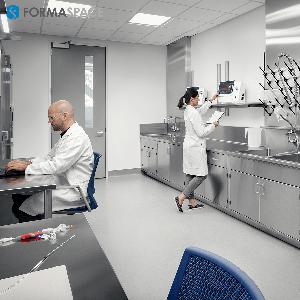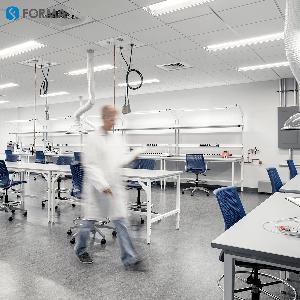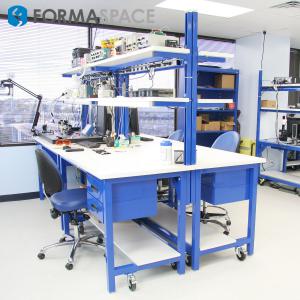Is Your Testing Laboratory Ready for ISO 17025 Accreditation?
If you offer lab testing or calibration services, the short answer is probably yes, you should get ISO 17025 accreditation.
AUSTIN, TX, USA, August 15, 2019 /EINPresswire.com/ -- Why? It’s quite simple. If you don’t have ISO 17025, your potential customers are likely to take their business to a competing laboratory that does. Clients are more likely to choose ISO 17025 accredited laboratories because they have been independently examined to ensure they are technically proficient and able to produce precise and accurate test and calibration data.The one exception to the rule is an in-house laboratory but, even then, you may be missing out. The ISO 17025 is a powerful framework for successfully managing lab operations — one you should consider implementing even if it’s not technically required.
The answer is it depends. Let’s answer these questions one at a time.
The first thing to know is that the ISO 17025 standard was upgraded in 2017 (to what’s known as ISO 17025:2017).
Laboratories that were accredited to the earlier standard (e.g. ISO 17025:2005) have been given three years to “upgrade.” If this applies to you, the clock is running out — you have until 2020 to get re-accredited.
Second, if your lab has also been certified to the most recent 2015 edition of ISO 9001 (known as ISO 9001:2015), this could come in handy during the ISO 17025:2017 accreditation process (both for first-time candidates and those upgrading their accreditation).
How so? If you’ve already successfully certified your lab as ISO 9001:2015 compliant, you can now use that same work to satisfy ISO 17025:2017’s Section 8 covering Management Requirements. Of course, you’ll still have to demonstrate the details to the accrediting body (AB) responsible for determining if you pass muster or not.
There are a couple other important changes in the 2017 version of ISO 17025 to note. Earlier versions of the standard were written before the widespread adoption of computerized record-keeping (including LIMS and electronic lab notebooks) so references to paper documents, reports, etc. have been removed. There are also some key philosophical changes. The standards authors have placed a much greater emphasis on identifying and mitigating risk in lab operations. Similarly, laboratories are also now called upon to define the levels of uncertainty in their work product.
First Steps Toward ISO 17025:2017 Accreditation: Setting Appropriate Goals
The whole ISO 17025 accrediting process can be a bit overwhelming for the uninitiated. Take a deep breath. Then start by thinking about the “end goal” and work backward from there to create an action plan.
But what is the end goal? To be blunt, the answer is the Scope Document, more formally known as the Scope of Accreditation.
This critical document tells the world which specific, accredited lab testing or calibration services you offer (with specific examples), the methods you use to calibrate or test, and the measurement uncertainty customers can expect.
This is what you will use to “market” your laboratory to potential clients and to differentiate yourself from the competition.
Now work backward. What are all the things you need to make that a reality?
Finally, some frank advice: Don’t jump to hiring a consultant to step you through the process just yet. First, educate yourself (and key staff) on what’s needed. There are many freely available tutorials (on YouTube, for example) that will help orient you to the requirements and process involved in ISO 17025:2107 accreditation. Be comfortable in your own knowledge before hiring a consultant (if you feel you need one) and certainly before engaging (e.g. paying) an accreditation body to start the evaluation of your lab.
Next, it’s important to think about the process from the auditor’s point of view.
First impressions are critical. As the saying goes, you don’t get a second chance to make a first impression.
Be organized. Think about what the auditor(s) will want to review before they come to visit your lab — and be prepared with copies of documents to hand over at the start of the process. For example, why not create a USB stick* with all your documents in place and give it to the auditor for review at the start of your meeting?
ISO 17025:2017 no longer requires paper documents. If you do provide printed documents, hand over copies; be sure to retain your originals.
Now let’s take a look at some tips for each of the eight ISO 17025:2017 requirements:
Normative References:
Be sure to have current editions of the relevant policy documents and regulations available for inspection. Otherwise, you may receive a deficiency that will have to be corrected later.
Terms And Definitions:
The ISO Organization maintains an online repository of current terms and definitions (Check out the Quick Start Guide here).
General Requirements:
This requirement relates to the overall organization of your laboratory. The updated version of ISO 17025 adds 2017 adds new standards for impartiality and confidentiality so be prepared to provide documentation for this.
Structural Requirements:
Here, auditors will be looking at the organizational structure of the lab, including the specific roles and responsibilities of management and of individuals. Be aware that relying on external resources (e.g. outside contractors, etc.) for certain testing and measurement tasks may make those tasks ineligible for accreditation.
Resource Requirements:
Auditors will be evaluating your laboratory facilities and environmental conditions (including an environmental conditions log).
Be prepared to show your auditor copies of personnel qualifications lists, personnel training records, accreditations held by subcontractors, as well as an official approved suppliers list.
Process Requirements
This is the core set of requirements documenting how your lab testing and calibration activities are based on accepted science, using adequate, up-to-date and technically validated methods — so be prepared to demonstrate this with test/calibration methods and procedure documentation. The 2017 edition of ISO 17025 now requires a report that evaluates measurement uncertainty, so have your uncertainty budget documents ready for the auditor as well.
You’ll also need to document processes for how to handle situations when things go wrong by establishing procedures for non-conforming work, customer complaints, and feedback. Be ready to show your assessor a copy of your complaint log, feedback surveys, list of non-conforming work, and root cause analysis investigations undertaken to perform corrective actions.
Your assessor may also want to review your proposed test and/or calibration report templates, to verify that you will be using the copyrighted logos of the assessor body and the ISO organization correctly, and that you are not making claims that go beyond the scope of your accredited services.
Read more ... https://formaspace.com/articles/wet-lab/iso-17025-accreditation-for-testing-labs/?utm_source=einpresswire&utm_medium=content&utm_campaign=articles-081519
Mehmet Atesoglu
Formaspace
+5122792792
email us here
Legal Disclaimer:
EIN Presswire provides this news content "as is" without warranty of any kind. We do not accept any responsibility or liability for the accuracy, content, images, videos, licenses, completeness, legality, or reliability of the information contained in this article. If you have any complaints or copyright issues related to this article, kindly contact the author above.




